- Home
- slideshows
- miscellaneous
- Apple's next major update to the Mac arrives this fall, and is called 'Mojave' - here are all the new features
Apple's next major update to the Mac arrives this fall, and is called 'Mojave' - here are all the new features
1. Four major apps from iOS are coming to Mojave.

2. Dark Mode.
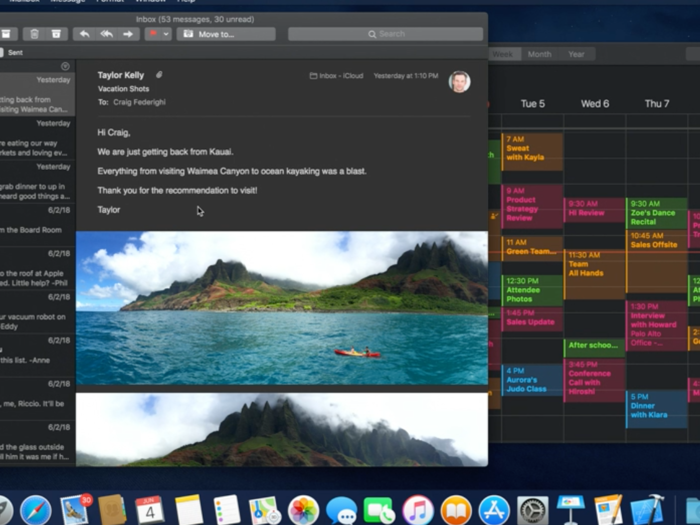
MacOS can be a bright operating system, in the literal sense. It can be a bit jarring to use a MacBook at night.
For those of us who'd prefer something a bit easier on the eyes, Apple is introducing "Dark Mode" in MacOS Mojave. As you might expect, it makes the entire MacOS experience darker. It might not be a perfect choice for mid-summer, back porch laptop use, but it's a great option for late night computer use.
3. Dynamic desktop.
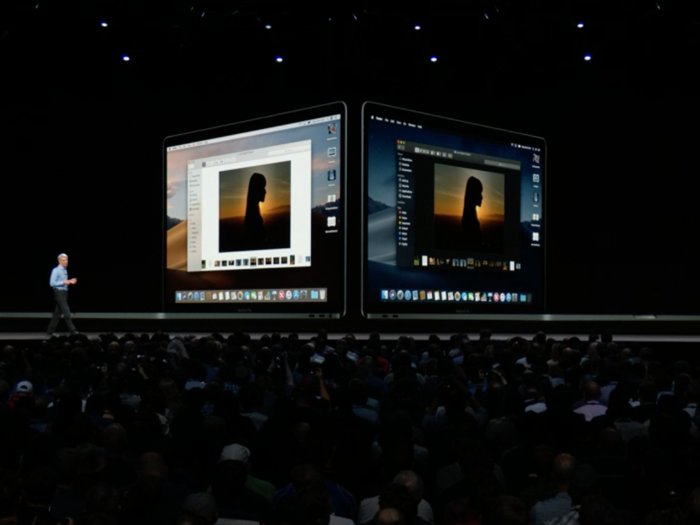
In the morning, you'll get a look at the Mojave Desert with a bright blue sky in the background (seen above, left). In the afternoon, a slightly calmer version of the same Mojave. At night, you'll see the desert cloaked in darkness (seen above, right).
In so many words, dynamic desktop mode is an option in MacOS Mojave to have your desktop evolve with the hours of the day.
4. Desktop stacks.
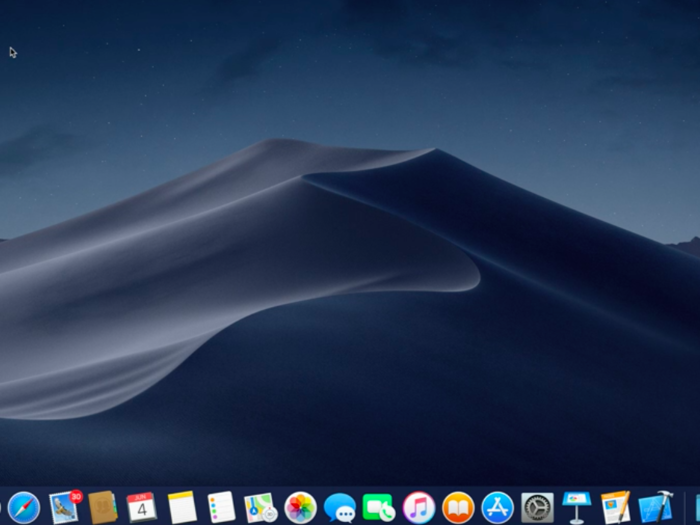
Messy desktop? No more!
As you can see above, the new desktop on MacOS Mojave "stacks" your files of the same type together. When you click on a stack, it expands out so you can select which file you'd like.
The concept of "stacking" files already kind of exist in MacOS, in the dock. Desktop stacks will act similarly, with files expanding out when the stack is clicked, albeit for groups of files on the desktop instead of in the dock. It's not just files of the same type that can be stacked — you can also group by date or by tag.
5. Finder changes, including Gallery View and more data.
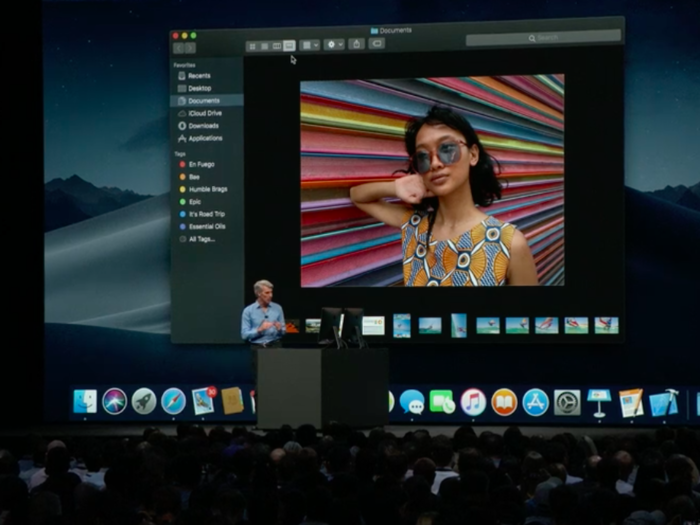
One of the most commonly used tools on any Mac is the file system, Finder.
In MacOS Mojave, Apple is making a few nice changes. The first change is something called "Gallery View," which enables users to view far more preview information about a given file before opening it.
In the case of the photo above, the EXIF data is available in addition the standard stuff like dimensions and file size. That means you can see where the photo was taken, when it was taken, and what device took the photo.
6. Screenshotting.
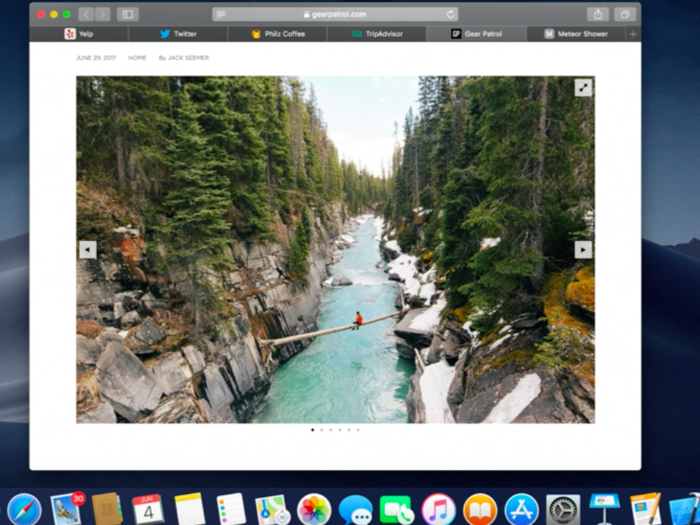
The screenshot tool in MacOS is getting far more robust in MacOS Mojave. More than just screenshotting, it can be used to capture video directly.
By selecting a portion of the screen just like you would for a still image, users can immediately begin recording whatever happens in that area. To stop the recording, there's a little button to click in the top right of the screen. The video then gets spit out as a file, available immediately.
Traditional screenshots can also be pushed directly into editing software, as seen above, rather than users having to move the file manually.
7. Adding more security protections.
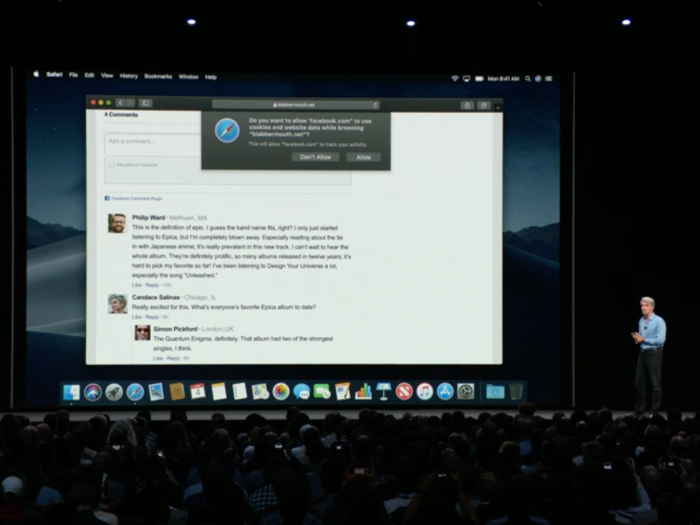
Apple spent a lot of time during its keynote addressing privacy — part of the company's ongoing offensive in the wake of the Facebook / Cambridge Analytica data scandal.
Most notably, Apple is taking aim at websites and internet services that track users. To that end, Safari users will see a new warning about websites that are tracking you when you may not be aware that they're tracking you.
Most notably, Facebook tracks the behavior of signed in users even when they're not using Facebook.com. That's because Facebook has plug-ins on many websites that use comments, or have "Share" buttons — those plug-ins are tracking your activity. Safari will now warn users when they're participating in this kind of activity, and enable them to opt out.
Moreover, Apple is making moves to cloak your Mac while you're using web services. In many instances, web services identify users by the type of system they're on (Mac/PC), the web browser they're using, and other non-personal identifiers. Apple is aiming to curb that behavior.
"Your Mac will look like everyone else's Mac." Federighi said.
Popular Right Now
Popular Keywords
Advertisement